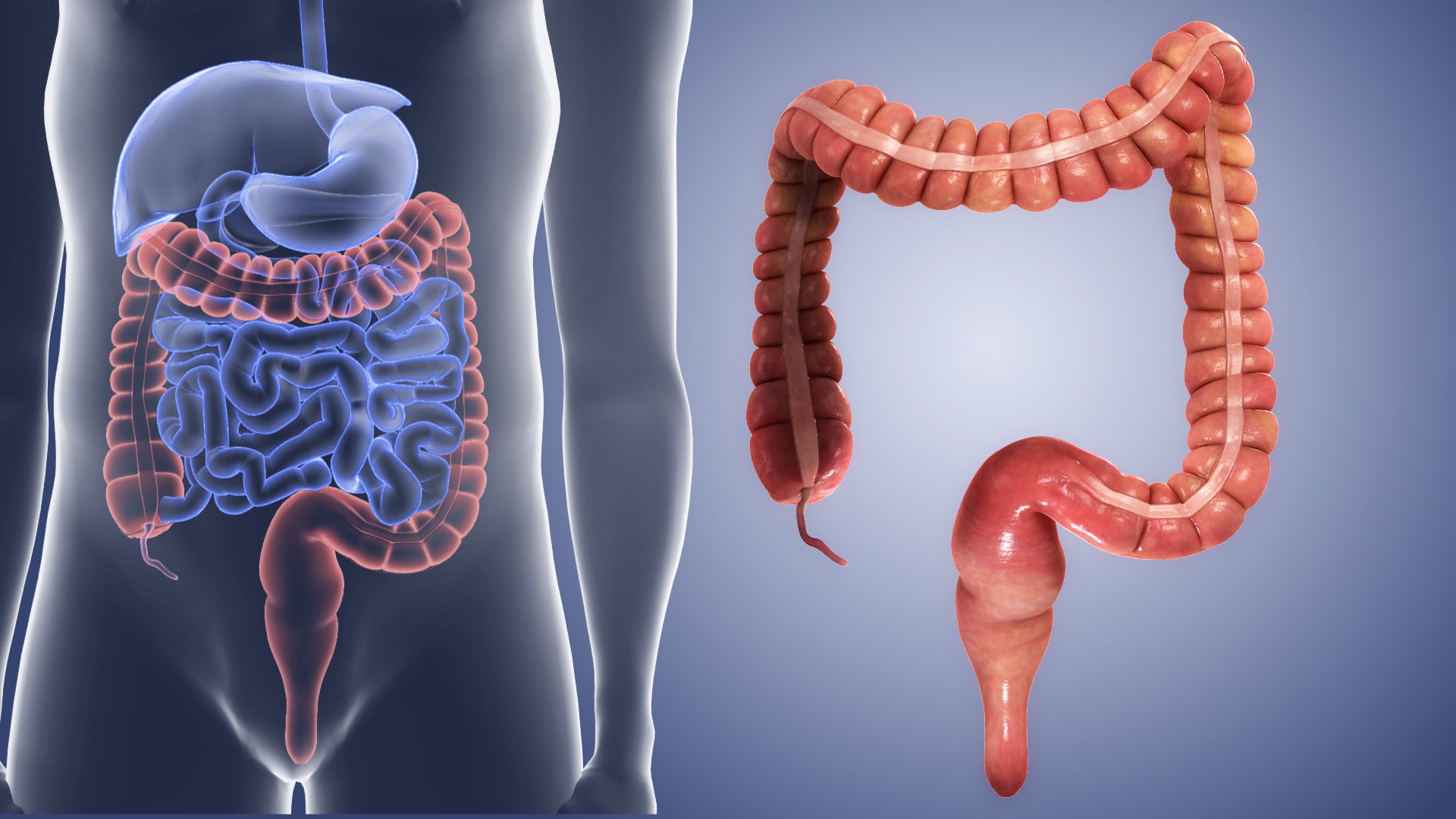The last part of the gastrointestinal and of the digestive tract in humans is the large intestine. The large intestine is the part of the digestive system that is responsible for extracting water from the indigestible residue of the food.The large intestine is also called the large bowel and is about 5 feet long and 3 inches in diameter.

It consists of four regions, the cecum, colon, rectum and anus. The large intestine is wider and shorter than the small intestine and has a smooth inner wall.
Functions of the Large Intestine
The large intestine performs four major functions, included below:
- Absorption: The absorption of water and mineral ions e.g., sodium and chloride. When the partially digested food reaches the large intestine, about 80 percent of the water from the food has been absorbed. The colon absorbs the rest of the water.
- Formation of faeces: Formation and temporary storage of faeces. While the remnant food moves along the colon, it is mixed with mucus and bacteria, converted into faeces, and stored temporarily before being eliminated.
- Bacterial fermentation: Bacterial fermentation of indigestible materials.
- Maintaining the bacteria in the gut: Maintaining a population of around 500 types of bacteria in the gut. The gut bacteria performs many useful functions other than fermenting undigested macronutrient material. The many functions of gut bacteria include interacting with the immune system, producing vitamins, stimulating the release of hormones involved in storage of fats as well as influencing our mood and feeling of well being.
Disorders and Conditions of the Large Intestine
The most common diseases and disorders of the large intestine are included below:
- Colonic polyps is a condition in which the extra tissue growing in the colon becomes cancerous.
- Ulcerative colitis occurs when there are ulcers in the colon and the rectum.
- Diverticulitis is the inflammation or infection in small pouches called diverticula that develop along the walls of the intestines.
- Irritable bowel syndrome is a gastrointestinal disorder in which the most common symptoms are abdominal pain, cramps, bloating, and altered bowel habits.
Depending on the disease and its severity, the treatment of the colonic diseases may vary greatly.
According to recent research, the large intestine and its resident bacterial population play significant roles in determining our health and well being. The large intestine is much more than a waste storage facility.
Disclaimer: The information in no way constitutes, or should be construed as medical advice. Nor is the above article an endorsement of any research findings discussed in the article an endorsement for any of the source publications.
Source:
- https://en.wikipedia.org/wiki/Large_intestine#Disease
- https://www.webmd.com/digestive-disorders/picture-of-the-intestines#1
- https://www.britannica.com/science/large-intestine
- https://www.sciencelearn.org.nz/resources/1832-large-intestine-function
- https://medlineplus.gov/colonicdiseases.html
- https://www.aboutgimotility.org/disorders-of-the-large-intestine.html
The longest part of the digestive system is small intestine. It is approximately 20 feet long and folds multiple times to fit into the abdomen. The small intestine forms the gastrointestinal tract along with the large intestine, the esophagus, and the stomach.
Read More..
Irritable bowel syndrome (IBS) can be classified as a gastrointestinal disorder. It is a functional disorder of the bowels and it leads to the occurrence of a group of symptoms. Around 3 to 20 percent of the Americans have Irritable bowel syndrome. It occurs more in women than in men.
Read More..
The human appendix, a slimy sac that hangs between the small and large intestine, has always been known as an evolutionary artifact that serves no purpose, but can potentially become a lethal case of inflammation. CDC reports 320,000 people are hospitalized each year and upto 400 Americans die due to appendicitis.
Read More..












